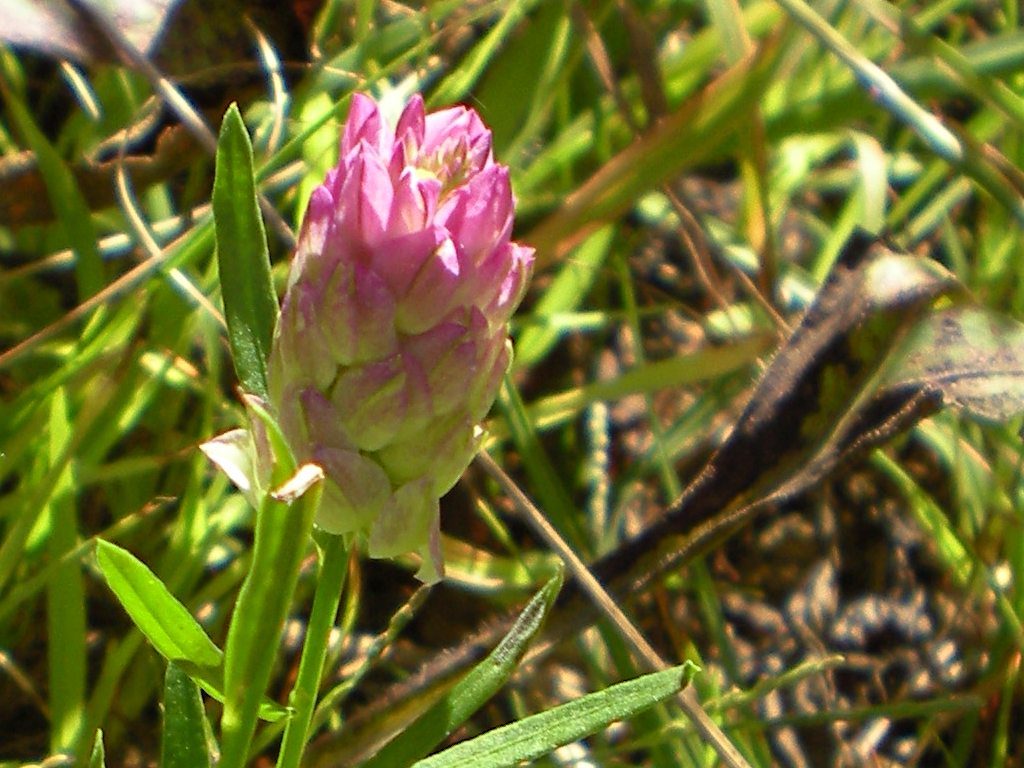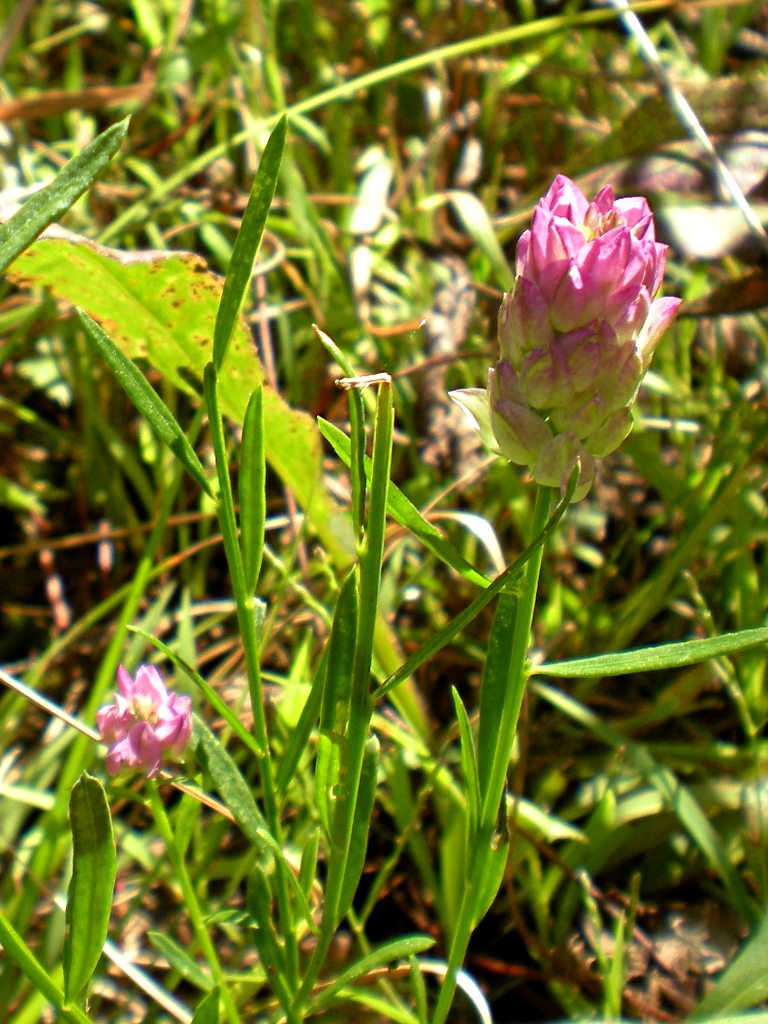
In a meadow full of grasses and wild flowers, this little gem is easily mistaken for a clover and passed by. A closer look reveals that the resemblance is merely superficial: the structure of the individual flowers is quite different, and the leaves are simple and linear. The flowers are deep pink or purple, fading to creamy greenish as they age, making the whole head delightfully artistic. These plants grew in a sunny meadow in Sewickley Heights, where they were blooming in late August.

Gray describes the genus and the species:
POLYGALA [Tourn.] L. MILKWORT. Flower very irregular. Calyx persistent, of 5 sepals, of which 8 (the uppermost and the 2 lowest) are small and often greenish, while the two lateral or inner (called wings) are much larger and colored like the petals. Petals 3, hypogynous, connected with each other and with the stamen-tube, the middle (lower) one keel-shaped and often crested on the back. Stamens 6 or 8; their filaments united below into a split sheath, or into 2 sets, cohering more or less with the petals, free above; anthers 1-celled. Ovary 2-celled, with an anatropous ovule pendulous in each cell; style prolonged and curved; stigma various. Fruit a small loculicidal 2-seeded pod, usually rounded and notched at the apex, much flattened contrary to the very narrow partition. Seeds carunculate. Embryo large, straight, with flat and broad cotyledons, in scanty albumen. — Bitter plants (low herbs in temperate regions), with simple entire often dotted leaves, and no stipules. (An old name composed of polys, much, and gala, milk, applied by Dioscorides to some low shrub reputed to increase lactation.)
Annuals, with all the leaves alternate; flowers in terminal spikes, heads, or racemes, chiefly purple or rose-color, in summer; none subterranean.
Keel minutely or inconspicuously crested; the true petals not longer but mostly shorter than the wings; seed pear-shaped.
P. sanguínea L. Stem sparingly branched above, leafy to the top; leaves oblong-linear; heads globular, at length oblong, very dense (8-10 mm. thick), bright red-purple (rarely paler or even white); pedicels scarcely any; wings broadly ovate, closely sessile, longer than the pod; the 2-parted caruncle almost equaling the seed. (P. viridescens L.) — Sandy and moist ground; common, N. E., westw. and southw.
In his Wild Flowers East of the Rockies (1910), Chester Albert Reed gives us this description:
FIELD or PURPLE MILKWORT (Polygala sanguinea) is a sturdy little pink-headed plant that grows in fields or meadows or along roadsides, often in company with Hop Clover; it is a strange fact that the flower heads of these very different species should be shaped so nearly alike. The slender, erect, wiry stems are very leafy and slightly branched at the top. A single round or cylindrical flowerhead terminates each branch, and others may be on slender peduncles from the angles of the upper leaves.
The flowers, proper, are concealed beneath the large, broad, scale-like, crimson-pink sepals that tightly overlap each other and form the head; these scalelike sepals correspond to the wings on the Fringed Polygala, the true petals and minutely crested keel being shorter and not visible from the outside. The small, stiff, acutely-pointed leaves are densely alternated on the stem up to the flower head. The plant grows from 6 to 12 inches high, and abounds throughout the U. S.